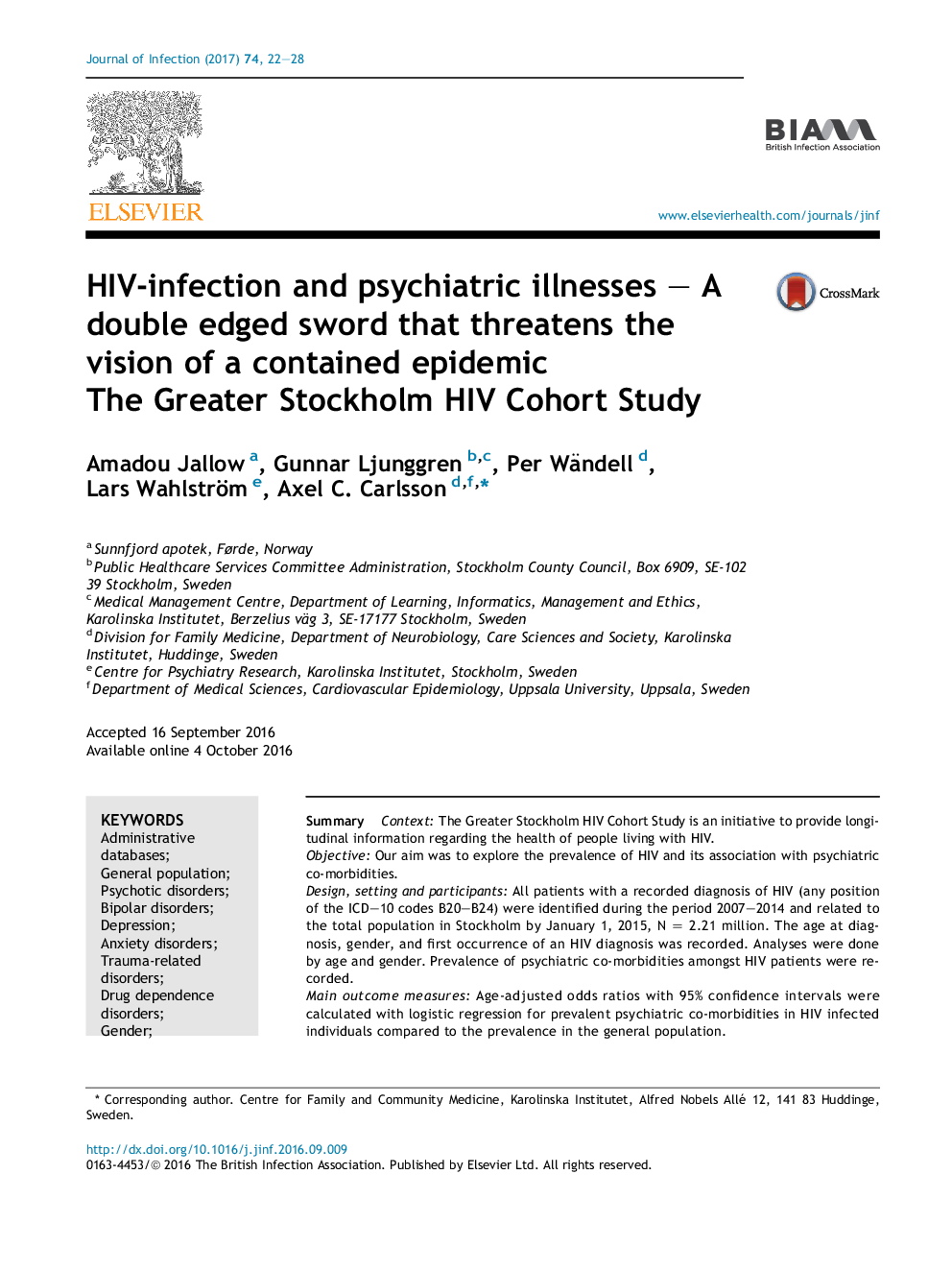| کد مقاله | کد نشریه | سال انتشار | مقاله انگلیسی | نسخه تمام متن |
|---|---|---|---|---|
| 5668663 | 1407912 | 2017 | 7 صفحه PDF | دانلود رایگان |

SummaryContextThe Greater Stockholm HIV Cohort Study is an initiative to provide longitudinal information regarding the health of people living with HIV.ObjectiveOur aim was to explore the prevalence of HIV and its association with psychiatric co-morbidities.Design, setting and participantsAll patients with a recorded diagnosis of HIV (any position of the ICD-10 codes B20-B24) were identified during the period 2007-2014 and related to the total population in Stockholm by January 1, 2015, N = 2.21 million. The age at diagnosis, gender, and first occurrence of an HIV diagnosis was recorded. Analyses were done by age and gender. Prevalence of psychiatric co-morbidities amongst HIV patients were recorded.Main outcome measuresAge-adjusted odds ratios with 95% confidence intervals were calculated with logistic regression for prevalent psychiatric co-morbidities in HIV infected individuals compared to the prevalence in the general population.ResultsThe total prevalence of HIV was 0.16%; females 0.10% (n = 1134) and males 0.21% (n = 2448). HIV-infected people were more frequently diagnosed with psychiatric illnesses and drug abuse. In females and males with HIV-diagnosis respectively, drug dependence disorder was 7.5 (7.76% vs 1.04%) and 5.1 (10.17% vs 1.98%) times higher, psychotic disorders were 6.3 (2.65% vs 0.42%) and 2.9 (1.43% vs 0.49%) times higher, bipolar disorder was 2.5 (1.41% vs 0.57%) and 3 (1.02% vs 0.34%) times higher, depression diagnosis was 1.5 (8.47% vs 5.82%) and 3.4 (10.17% vs 2.97%) higher, trauma-related disorder was 1.5 (6.00% vs 4.10%) respectively 2.9 (4.45% vs 1.56%) times higher, anxiety disorder was 1.2 (6.88% vs 5.72%) and 2.2 (6.54% vs 2.93%) times higher than in their non-infected peers.ConclusionDespite effective ART, many individuals with HIV have an impaired mental health and a history of drug abuse that may threaten the vision of a contained epidemic.
Journal: Journal of Infection - Volume 74, Issue 1, January 2017, Pages 22-28